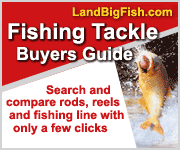Fishing Hook Parts and Terms
Written by Weekend Angler on May 28th, 2009At a cursory glance, you may be led to think that a fishing hook is a rather simple tool. After all you just will see a curved piece of metal with a sharp point on one end and a small hole on the other, where you insert a fishing line. The fact, however, is that there is really a lot more in this simple bit of fishing gear.

Source: Wikipedia
Parts of a Fishing Hook
- Point: Nothing is taken for granted. For example, the point of the hook alone matters a lot. It is important for the sides to taper smoothly and be well rounded. There are different styles of points, which have different uses. For example, the rolled-in one requires less pressure in setting the hook. It holds fish very firmly since it sets quite deeply. On the other hand, if you are handling delicate species of fish like crappie (whose mouth is pretty soft), you will be better off with a hollow-pointed hook.
- Barb: Without a barb at the tip of the hook a fish can slip off the hook.
- Shank: The various sizes of the shanks are usually measured from 32 to 1, representing the smallest to the larger. From there, the measurement goes from 1/0 to 20/0. Just as you would expect, smaller hooks are used for smaller fish and vice versa.
- Eye: You should go for the size of eye that won’t give you trouble as you try to tie your fishing line with wet slippery hands. Your handling will also be easier if the eye is ringed.
- Bite: The portion of the hook with the point and barb is known as the front length or the bite.
- Bend: The curved section is known as the bend, which leads to a shank with a hole that is known as the eye.
- Gap or Gape: This is the distance between the point and the shank is known as the gap or gape.
- Throat or bite: Is the distance between the farthest point of the bend and the tip.
Why Knowing These Terms Is Important
There are different types of hooks of varying sizes, and these apparently small differences have a significant effect on fishing. Different types of hooks suit different kinds of fishing, and it is important for you to choose just the right hook for your desired catch.
These details should help you to make the best choice, the next time you set out to buy more fishing hooks.
If you enjoyed this post, make sure you subscribe to my RSS feed!


